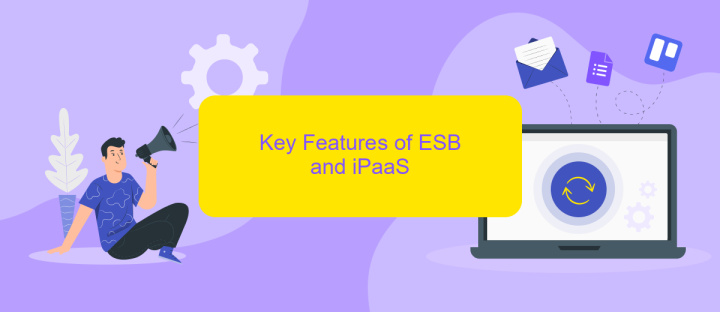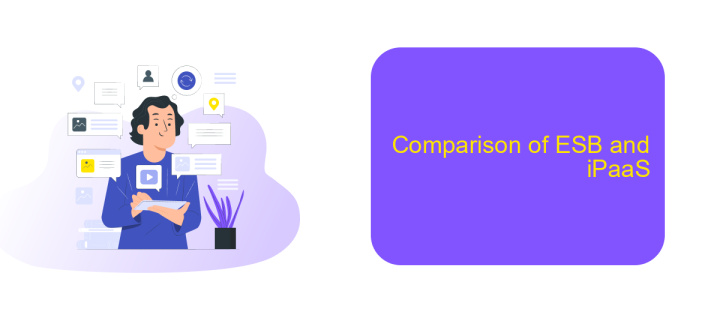ESB iPaaS
In today's rapidly evolving digital landscape, businesses require seamless integration of diverse applications and data sources. The ESB (Enterprise Service Bus) iPaaS (Integration Platform as a Service) offers a robust solution, enabling organizations to streamline their IT infrastructure and enhance operational efficiency. This article explores the key features, benefits, and use cases of ESB iPaaS, highlighting its role in modern enterprise integration strategies.
Introduction to ESB and iPaaS
Enterprise Service Bus (ESB) and Integration Platform as a Service (iPaaS) are critical components in modern IT infrastructure. ESB acts as a communication backbone, facilitating seamless data exchange between different applications and services within an enterprise. On the other hand, iPaaS offers a cloud-based platform for integrating various applications and services, making it easier for businesses to manage their integration needs without extensive on-premise infrastructure.
- ESB provides a centralized architecture for message brokering and routing.
- iPaaS offers scalability and flexibility with cloud-based integration solutions.
- Both ESB and iPaaS enhance operational efficiency and data consistency.
For businesses looking to streamline their integration processes, tools like ApiX-Drive can be invaluable. ApiX-Drive simplifies the setup of integrations between various applications and services, reducing the need for complex coding and manual intervention. By leveraging such tools, enterprises can achieve faster deployment times and improved reliability in their integration workflows.
Benefits and Use Cases of ESB and iPaaS

ESB (Enterprise Service Bus) and iPaaS (Integration Platform as a Service) offer significant benefits for modern businesses. ESB facilitates seamless communication between different software applications within an organization by acting as a central hub for data exchange. It ensures reliable message delivery, supports various communication protocols, and enhances scalability. On the other hand, iPaaS provides a cloud-based platform for integrating disparate systems, enabling businesses to automate workflows and streamline operations without extensive coding. iPaaS solutions like ApiX-Drive can simplify the integration process, allowing organizations to connect multiple applications quickly and efficiently.
Use cases for ESB and iPaaS span various industries and scenarios. ESB is ideal for large enterprises needing to integrate legacy systems with modern applications, ensuring consistent data flow across departments. It is also beneficial for organizations with complex IT environments requiring robust error handling and transaction management. iPaaS is well-suited for businesses looking to adopt a more agile approach to integration, such as connecting cloud-based SaaS applications, automating marketing and sales processes, or synchronizing data between CRM and ERP systems. ApiX-Drive, for instance, enables businesses to set up integrations without coding, making it an excellent choice for companies seeking to enhance efficiency and reduce operational costs.
Key Features of ESB and iPaaS

Enterprise Service Bus (ESB) and Integration Platform as a Service (iPaaS) both play crucial roles in modern enterprise integration strategies. ESB acts as a middleware that facilitates communication between different applications by routing, transforming, and mediating messages. iPaaS, on the other hand, offers a cloud-based solution for integrating applications and services, simplifying the process of connecting disparate systems.
- Scalability: Both ESB and iPaaS provide scalable solutions to handle growing data and integration needs.
- Flexibility: ESB allows for complex integrations and customizations, while iPaaS offers pre-built connectors and a user-friendly interface.
- Real-time Integration: Both platforms support real-time data synchronization and event-driven architecture.
- Security: Robust security features including encryption, authentication, and authorization are integral to both ESB and iPaaS.
- Monitoring and Management: Comprehensive monitoring and management tools to ensure smooth operation and quick troubleshooting.
For instance, ApiX-Drive, an iPaaS solution, simplifies the integration process with its intuitive interface and a wide range of pre-built connectors. This allows businesses to quickly set up integrations without extensive coding, making it a valuable tool for modern enterprises. Both ESB and iPaaS are essential for seamless and efficient integration in today's complex IT environments.
Comparison of ESB and iPaaS

Enterprise Service Bus (ESB) and Integration Platform as a Service (iPaaS) are two prominent solutions for integrating various applications and services within an organization. ESB is a traditional middleware solution that facilitates communication between different systems by acting as a central message broker. It is often used in on-premises environments and requires significant setup and maintenance.
iPaaS, on the other hand, is a cloud-based integration platform that simplifies the process of connecting disparate applications and data sources. It offers a more flexible and scalable approach, making it ideal for modern, cloud-centric architectures. iPaaS solutions like ApiX-Drive provide user-friendly interfaces and pre-built connectors, reducing the complexity of integration projects.
- Deployment: ESB is typically on-premises, while iPaaS is cloud-based.
- Scalability: iPaaS offers greater scalability compared to ESB.
- Ease of Use: iPaaS platforms like ApiX-Drive provide intuitive interfaces and pre-built connectors.
- Maintenance: ESB requires more maintenance efforts than iPaaS.
In conclusion, while ESB is suitable for complex, on-premises integration needs, iPaaS offers a more agile and scalable solution for modern cloud environments. Services like ApiX-Drive make it easier for businesses to automate and streamline their integration processes without extensive technical expertise.
Choosing the Right Solution for Your Business
When choosing between an ESB (Enterprise Service Bus) and an iPaaS (Integration Platform as a Service) for your business, it's crucial to evaluate your specific needs and objectives. ESB solutions are ideal for organizations with complex, on-premise systems requiring robust, real-time communication and data transformation capabilities. These solutions often demand significant upfront investment and technical expertise but offer unparalleled control and customization.
On the other hand, iPaaS platforms like ApiX-Drive provide a more flexible and cost-effective approach, especially for businesses looking to integrate cloud-based applications with minimal technical overhead. iPaaS solutions are designed for ease of use, offering pre-built connectors and user-friendly interfaces that enable quick setup and management of integrations. By leveraging an iPaaS, you can streamline your operations, reduce time-to-market, and scale your integrations effortlessly as your business grows.


FAQ
What is an ESB iPaaS?
How does ESB iPaaS differ from traditional ESB?
What are the key benefits of using ESB iPaaS?
How can ESB iPaaS help with automation and integration?
Is ESB iPaaS suitable for small and medium-sized businesses?
Do you want to achieve your goals in business, career and life faster and better? Do it with ApiX-Drive – a tool that will remove a significant part of the routine from workflows and free up additional time to achieve your goals. Test the capabilities of Apix-Drive for free – see for yourself the effectiveness of the tool.

